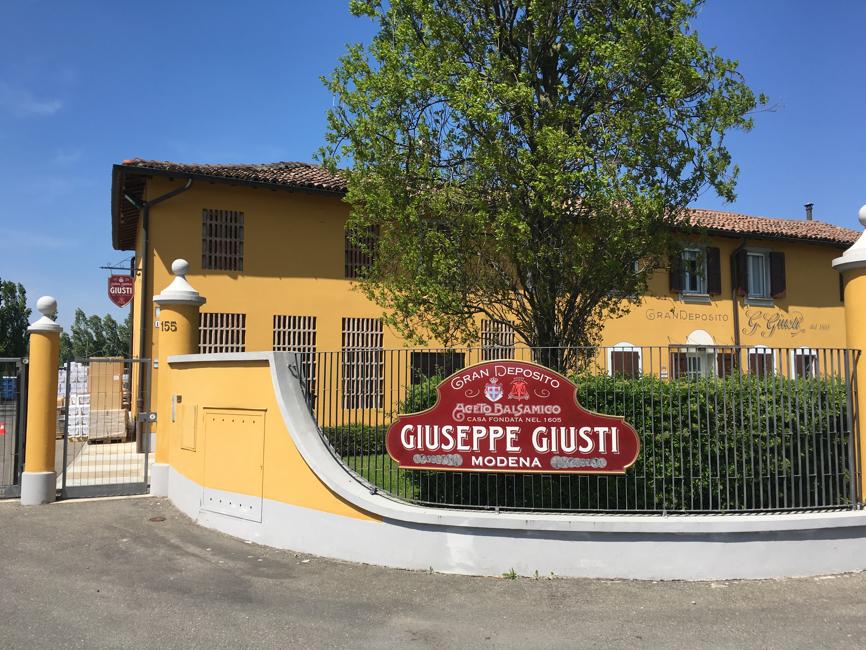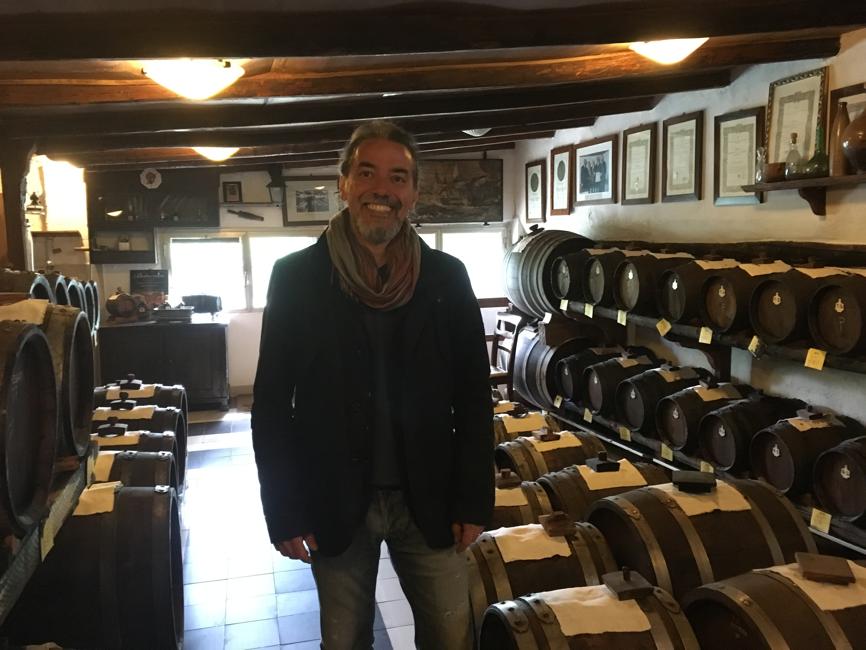

MODENA, Italy — The view from Modena’s campanile is an enviable one. The city, glittering in the northern Italian sun, advances from the Piazza Grande toward the Apennines one red-tiled roof at a time.
But what’s truly coveted in Modena isn’t that gilded panorama. Rather it’s what rests just beneath those ancient tiles. For Modena is home to aceto balsamico tradizionale, a curious liquid that has for centuries resided in the attic.
“Ferrari is our red gold, and traditional balsamic is our black gold,’’ says Cristina Sereni, director of a museum dedicated to the prized vinegar in the nearby town of Spilamberto.
Sereni makes it clear to guests that this viscous fluid bears little resemblance to the watery fare offered at American salad bars. That vinegar is aged for 60 days. Traditional balsamic of Modena matures for a minimum of 12 years, though often for 25, and sometimes for over a century.
Yet age is just one distinguishing mark. To truly understand traditional balsamic, the vinegar should be seen as both culinary treat and cultural icon. “Barrels of balsamic are passed down from generation to generation throughout the Province of Modena,’’ says Maurizio Fini, vice president of the Coterie of Traditional Balsamic Vinegar, a local association that oversees the museum and protects the vinegar’s distinct heritage.
“In my own vinegar loft, I am with my father and my grandfather,’’ says Fini, silver haired and in his 70s. “Because their spirit lives within the barrels.’’
The casks are indeed at the heart of it all, with the lifeblood being cooked grape “must,’’ or juice, from the province’s white Trebbiano and red Lambrusco varietals.
The fledgling vinegar then moves through a series of five or more barrels during the lengthy aging process. Oak, cherry, juniper, and other barrel woods impart their distinct flavors while warm summers in the attic spur evaporation — making the balsamic that remains more concentrated and altogether distinctive. You know you’re in an acetaia, or traditional balsamic producer, because you’re awash in a rich, fruity perfume.
Acetaia Caselli is one of the many that dot the Modenese countryside, and the road signs that tout these makers are plentiful.
The acetaia sits in the neighboring village of San Vito and doubles as the home of proprietors Simone and Elisa Caselli. Their organic farm arose from a lifelong affinity for the region’s black nectar — Simone’s grandfather started a battery for him at birth 41 years ago.
“It harkens back to when balsamic vinegar batteries were heirlooms and often dowries for local women,’’ says Caselli. “It’s something to be tended to and treasured. What’s inside is so valuable that when one barrel starts to leak because of age, a new barrel is constructed around the old one to keep the flavors, the integrity, secure.’’
Visitors learn about the production stages in detail — described by Caselli in a tone usually reserved for romance — and they can view the more than 600 barrels aging under wooden rafters. Many were inherited from his family, who began to forge their personal stock nearly a century ago.
“Traditional balsamic is about patience,’’ says Caselli. “We begin with 100 liters of grape must and after 25 years receive only one liter of balsamic. It has to be love for a return that small.’’
The return on taste, however, is immense, and there are plenty of opportunities to sample after the tour. Epicureans can plant themselves at long farmhouse tables and enjoy chunks of Parmigiano-Reggiano cheese, each crowned with balsamic droplets. Or they can try another local favorite, vanilla gelato and strawberries, similarly topped.
“You want to balance the salty and the sweet and create something more complex. We enjoy placing a few drops on a frittata or on salmon and avocado to finish off the dish,’’ he explains.
Balsamic-infused specialties can be found at nearly every restaurant in the city of Modena. It’s drizzled on prosciutto pizza and on fried dough bites, called gnocco fritto. It’s even blended into gravy and poured over pork loin at beloved restaurants like Da Danilo and Da Enzo.
Shops to purchase balsamic are also ubiquitous. Round 100-milliliter bottles, devised by famed automobile designer Giorgetto Giugiaro, contain balsamic certified by a consortium of traditional producers and run about $80 for the 25-year-old variant.
A popular choice is Giuseppe Giusti, established in 1605 and the oldest traditional balsamic producer. Found in a smart villa outside the city center, the acetaia is still family owned, now into the 17th generation.
“One of our ongoing challenges is to show the value behind traditional balsamic,’’ says CEO Claudio Stefani Giusti. “You can purchase wine for three dollars and the same can be said for non-traditional vinegars from Modena. Therefore, we have to shift the perception of what you receive. So much is tied to the unique flavor, and that, in turn, is derived from history.’’
Giuseppe Giusti offers an acetaia tour and tasting, paired with a gallery devoted to the company’s origins. The first printed recipe for balsamic hangs on the wall, and antique glass tools for extracting barreled vinegar — developed as if for a surgeon — are displayed here, too. It’s clear in such a place that time is immaterial. The past is ever-present and then bottled.
“This isn’t a mass production race,’’ says Giusti. “When you understand the story of traditional balsamic, only then do you come to know our province, our work ethic, and our view of the good life.’’
In many ways, that vita bella came full circle three years ago, when Maurizio Fini and fellow coterie members sought to rewrite the past. Napoleon once financed his wars by plundering the balsamic stores in Modena’s Ducal Palace, now the site of the city’s military academy.
Fini led the return of five new balsamic batteries to replace what had long since disappeared — amid much ceremony and fanfare. “I can tell my grandchildren that I helped right Napoleon’s wrong,’’ he says, “and it can again be said that under that roof lies balsamic vinegar of Modena.’’
Matthew Bellico can be reached at matthew.bellico@gmail.com.



